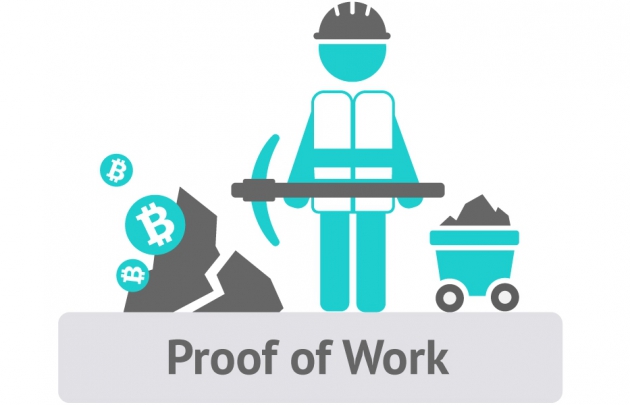
As we all know, Bitcoin (BTC) was the first cryptocurrency developed by the infamous and elusive Satoshi Nakamoto.
Bitcoin set the standards upon all other cryptocurrencies built their own ecosystems, and at its core is the Proof-of-Work (PoW) consensus reaching mechanism.
What is Proof-of-Work (PoW)?
PoW is, at its core, a way by which blocks are produced, and transactions are verified on the network.
As the name itself suggests, there has to be some work involved, and, yes, indeed there is.
Work is done by the machines called miners which can be owned by anybody who wants to participate in the process. Simply put, miners compete against each other in solving complex mathematical puzzles.
Whoever solves it first, gets rewarded.
Is it so Simple?
Actually, no. It is not.
To secure the blockchain, miners have to confirm everything that happens on the network.
When a miner solves the given puzzle, a new block is formed, all transactions are placed inside and confirmed. Those who send transactions pay for them through fees, which are then distributed to miners as a reward for making those transactions possible.
You Have Heard of Something Called Hash Before?
The solution for the mentioned puzzle is called hash.
Every machine that does cryptocurrency mining has a certain level of ability to solve puzzles, and that ability is called hashing power.
As the network grows, there are more and more potential problems involved, so, exponentially, it takes more hashing power to find the right solution for the given mathematical problem – the difficulty of mining increases.
What are Algorithms?
A hashing algorithm is a hash function which uses cryptography – that is why those coins are called CRYPTOcurrencies.
We can define it as a mathematical algorithm that maps data of arbitrary size to a hash of a fixed size. The hashing algorithm is being used for digital signatures and authentication.
Bitcoin uses SHA (Security Hash Algorithm)-256, but with the development of other blockchain platforms, many more came into existence:
- Ethash
- Equihash
- Dagger-Hashimoto
- X11
- Lyra2rev2
- Lyra2v2
- CryptoNight
- NeoScrypt
- Scrypt
- etc.
Is There Luck Involved in Mining?
Theoretically, yes.
Back in the early days of PoW, a person could just download the needed software, connect to the blockchain, and start mining on his own. Sooner or later, the miner would get “lucky,” and his machine would find a solution, a block would be produced, and miner would get rewarded for his work.
However, as the global hash rate on the various networks grew, miners started to form something that resembles medieval guilds. Just the same as medieval leather workers collaborated to get a bigger share of the market, miners combined their hashing power to be more competitive on the network, and earn more rewards.
Those guilds are called mining pools, and they marked the end of the solo mining era on the biggest platforms, simply because solo miners could not compete with mining pools’ overwhelming ability to solve puzzles anymore.
Currently, four of the biggest Bitcoin mining pools hold more than 50% of the hashing power on the Bitcoin’s blockchain.
Mining Machines
Again, theoretically, a person can mine cryptocurrencies with anything that is considered to be a computer, but the best results are achieved with specialized equipment.
GPU mining rigs and ASIC miners provide a substantially more substantial amount of hashing power than any regular computer, and, dependable on the mathematical algorithm used by the blockchain, they are the most efficient for cryptocurrency mining.
Sustainability
Even though through the infancy phase of cryptocurrencies PoW was the only way of obtaining the network’s security, lately, it is starting to be considered as a waste of the electrical energy.
Alex de Vries published a study which shows that Bitcoin (only Bitcoin) mining annually consumes almost as much electric power as Ireland.
Therefore, PoW is, step by step, being replaced by other, more efficient (and quicker) consensus reaching mechanisms.
Read More Proof-of-Work (PoW) : https://ift.tt/2C8WwGhBagikan Berita Ini














0 Response to "Proof-of-Work (PoW)"
Post a Comment